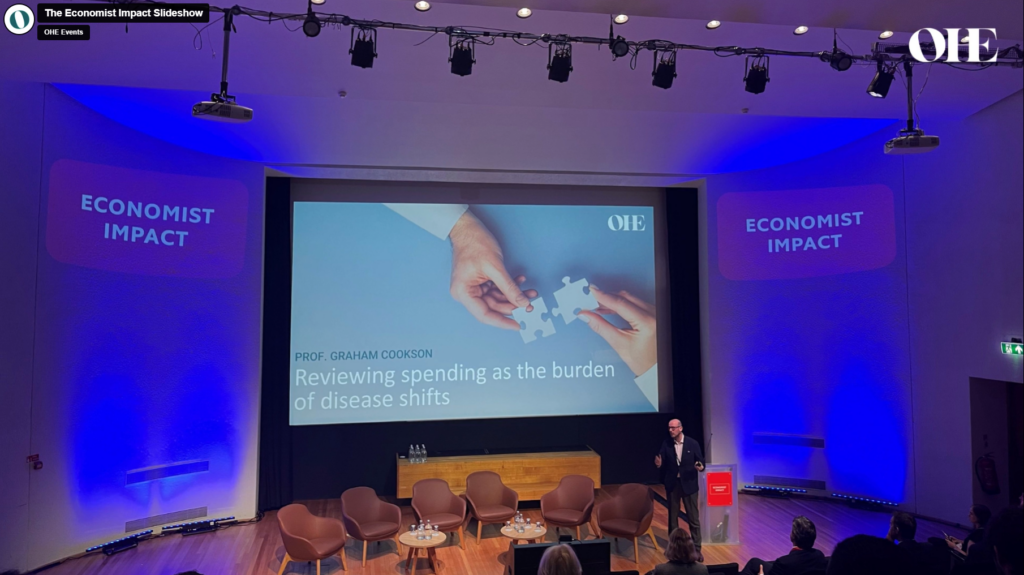Sustainability
Sustainable healthcare policies and practices can help reduce waste, minimize pollution, and foster a healthier population, but novel approaches and cross-cutting collaboration are needed to drive change.

OHE Annual Lecture 2025 | Ten years to turn it around: The economic reality of NHS reform
9 July 2025
With the new NHS 10-Year Plan now published, attention turns from ambition to action. How realistic is the roadmap? What will it take to deliver meaningful…

Valuing health in an era of climate crisis: informing policy through economic evidence
18 June 2025
This panel brings together leading researchers to explore how health economics can inform policy design in the context of the climate crisis. Rather than proposing new…

Driving Green Change: Lessons from the 2024 Innovation Policy Prize
5 February 2025
Last week, the OHE Innovation Policy Prize was jointly awarded to Professor Andrew Briggs and Professor Thomas Pogge.

2024 Innovation Policy Prize Award Ceremony
1 January 2025
During this evening, we will award the £40,000 fund to the winners, Andrew Briggs and Thomas Pogge, who will present their solution to this year’s question:…

Green Healthcare: Are We Asking the Right Questions?
11 September 2024
The climate-health crisis is a growing global concern, and identifying the right starting points is crucial.

Green Healthcare: Are We Asking the Right Questions?
4 September 2024
This engaging webinar explored the pressing need for the healthcare sector to address its impact on climate change whilst balancing ever-growing financial constraints. This session examined…

Looking Further Afield – What Can Health Economics Learn from the Environmental Economics Approach to Discounting?
1 February 2024
Discounting in economic evaluations presents challenges for therapies with high up-front costs and long-term benefits. We discuss how health economics can learn from debates occurring within environmental economics, where discounting poses similar challenges.

Navigating the Intersection of Healthcare and Environmental Sustainability: ISPOR Europe round-up on the inclusion of environmental impact in HTA
17 January 2024
In this insight, commissioned and funded by Chiesi S.p.A, we reflect on the discussions that took place at ISPOR Europe 2023 and how environmental impact is factored into HTA.

An eye on sustainability at the Economist’s Future of Health Europe
30 October 2023
Learn more about how the topic of sustainability was tackled by a broad range of speakers and the key themes which emerged.